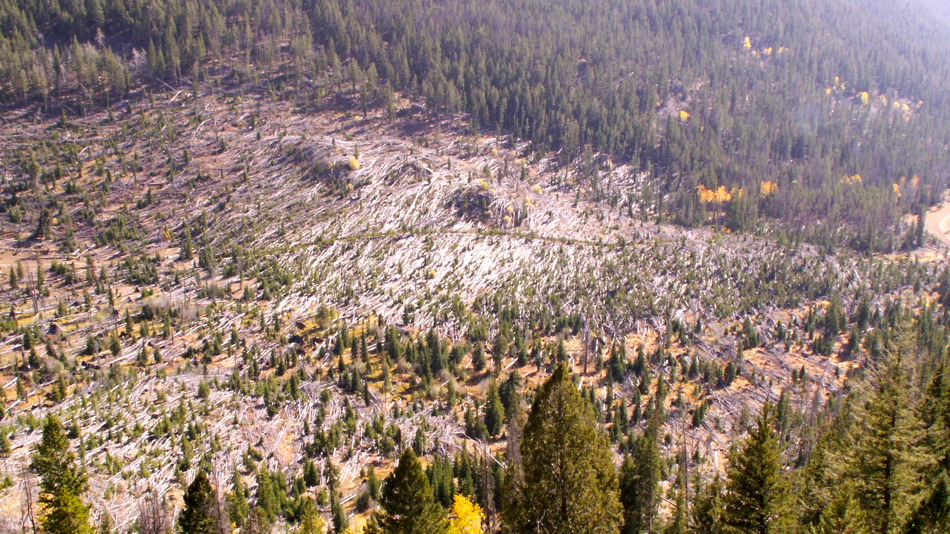|
Chicken Little was right after all! 
Click here to see a closer view.
Strange site . . .
Hunters and hikers who visit the Thunderbolt Creek drainage 20 miles north of Butte (map) are treated some great scenery as they wander the forests and meadows in the shadow of the Continental Divide (photo). But perhaps the most memorable sight for those who been here is the incredible area of trees blown down by a straight-line wind event in 1999. The "blow-down" (satellite photos), which spans 55 acres (about 50 football fields) , is covered with mature Lodge Pole pines that were uprooted (photo) and laid out in the same direction as though a giant steam roller had passed over them.
Who done it? . . .
Although Montana does exerience an occasional tornado, the orientation of the dead trees near Thunderbolt Creek proves they were blown down by a weather phenomenon known as a "microburst". If it had been a tornado, the damage pattern would have been much more chaotic, with trees scattered and twisted by the tornado's spiraling winds. The fact that the trees are all laid down in the same direction (photo), indicates that the straight-line winds of a microburst are to blame.
The sky is falling! . . .
Like tornadoes, lightning, hail, and flash floods, microbursts are associated with severe thunderstorms. Microbursts (and downbursts) are caused by the same cooling effect that happens when sweat (mostly water) evaporates from your skin. As sweat evaporates it cools your body because the water molecules absorb heat as they change from liquid to vapor. The same thing can happen with a thunderstorm. As rain falls through very dry air, much (or all) of the rain may evaporate. As this happens water molecules absorb heat from the surrounding air, making the air much colder. . . . The more evaporation, the colder the air gets. Anyone who has opened a refrigerator door knows that colder air is heavier than warmer air. As this air (cooled by the evaporation of rain) gets heavier, it plunges toward the ground like a lead weight. When the microburst reaches the ground surface winds may exceed 150 miles per hour - strong enough to blow fully grown pine trees over. Fortunately no one was in the area when the microburst happened. To learn about a deadly microburst that happened in northeastern Montana in 2010, CLICK HERE.
Do not disturb . . .
The blow-down, which is part of the Deer Lodge National Forest, was initially slated to be salvaged (trees removed for lumber). However, the area is prime wolverine habitat and it has also been designated as a roadless area, so the Forest Service decided to leave it alone.
Term: latent heat
More photos of the Thunderbolt Blow-Down
|



